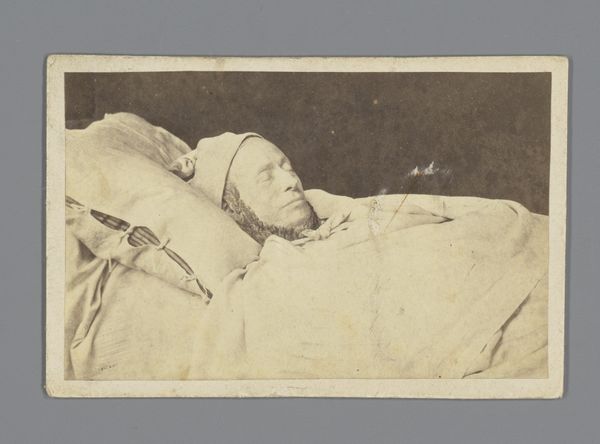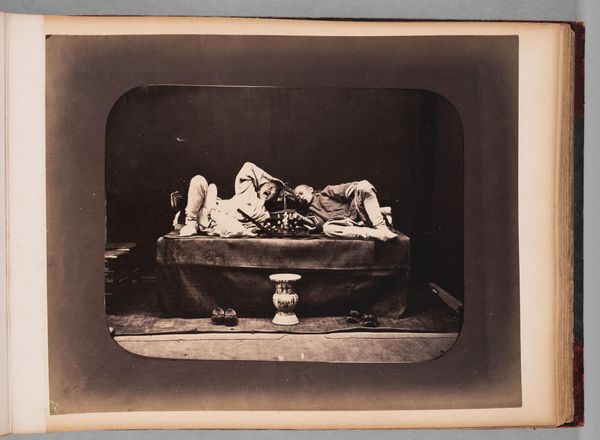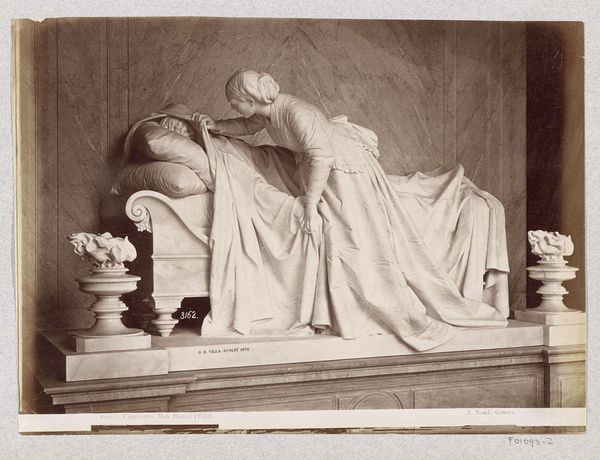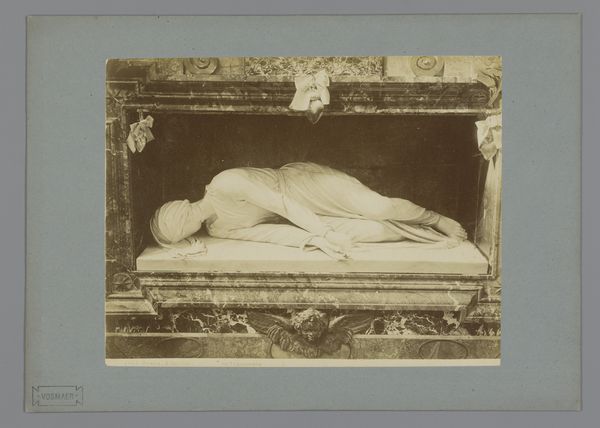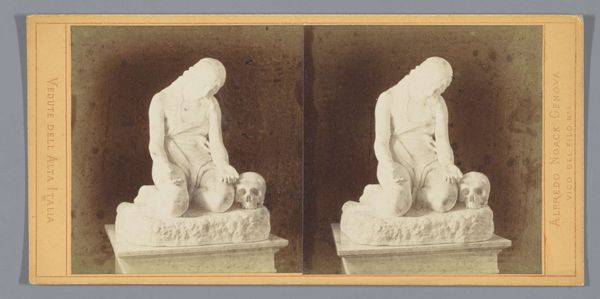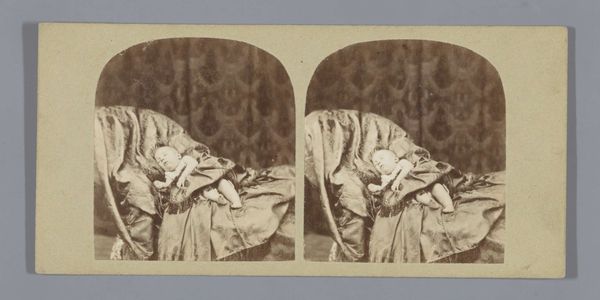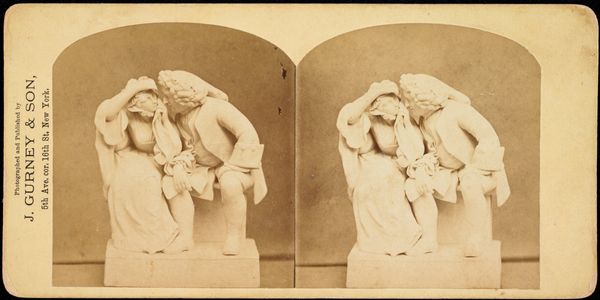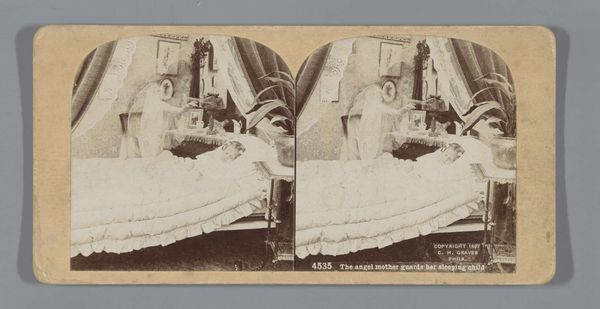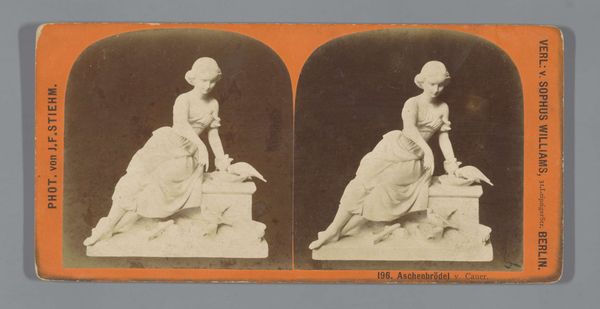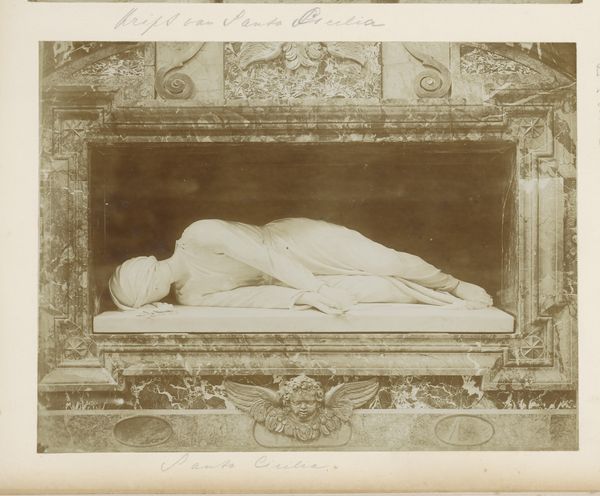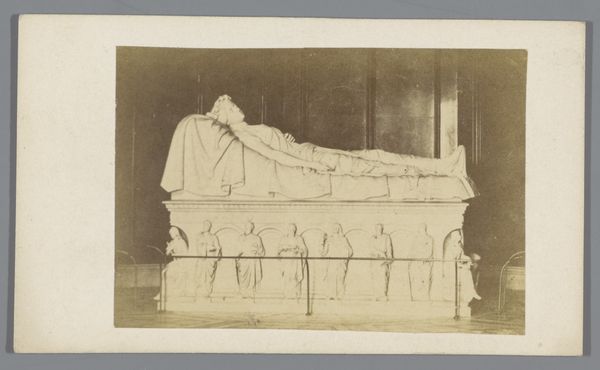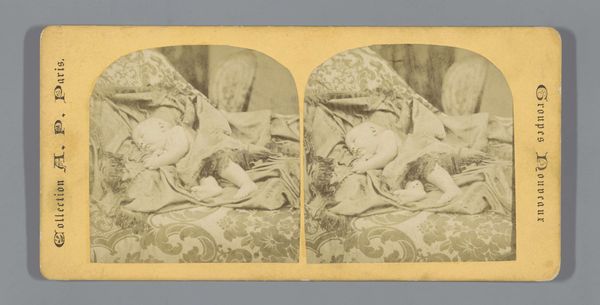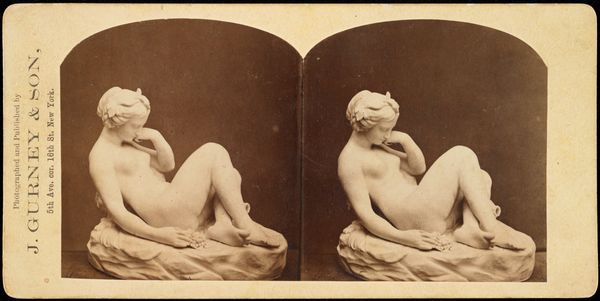
Dimensions: height 85 mm, width 174 mm
Copyright: Rijks Museum: Open Domain
Editor: We're looking at a photographic print of "Sculptuur van de slapende Ariadne," or Sleeping Ariadne, likely taken between 1855 and 1890 by Karl Heinrich Franz Stolze. It presents a marble sculpture. It's quite striking in its stillness; she seems burdened by some deep melancholy. How do you interpret this work within its historical context? Curator: That melancholy, I think, is precisely what makes it so evocative and popular across different times. The sculpture itself is of course a recreation of a much older, Hellenistic-era piece depicting Ariadne abandoned by Theseus. But to consider Stolze's photograph, we have to think about how classical sculptures were being disseminated in the 19th century. Photography allowed for mass reproduction and circulation of artworks previously only accessible to a privileged few. This changed who could access and engage with high art. Does that shift resonate with you? Editor: Absolutely. It’s about democratization, isn’t it? Bringing art to a wider public. Making her sorrow, and by extension, the great stories of Greek mythology, accessible. Curator: Precisely. Consider the rise of museums during this period – they became institutions meant for public education and, in a sense, social improvement through exposure to culture. Photographs like this, sold as affordable souvenirs, further propelled that mission, packaging classicism for a new consumer audience. They reflected and shaped prevailing ideas of beauty, and womanhood for that matter, through this easily accessible format. Editor: So, it's not just about appreciating the original sculpture, but also understanding how its image was used to shape cultural values. Curator: Exactly. This photograph serves as a window into the evolving relationship between art, representation, and society during the 19th century. And in this picture it captures, a lot. Editor: I had focused mainly on the subject but now appreciate how photography changed accessibility of classic works. Curator: Seeing beyond the object represented is essential to appreciating art history. It gives context.
Comments
No comments
Be the first to comment and join the conversation on the ultimate creative platform.
